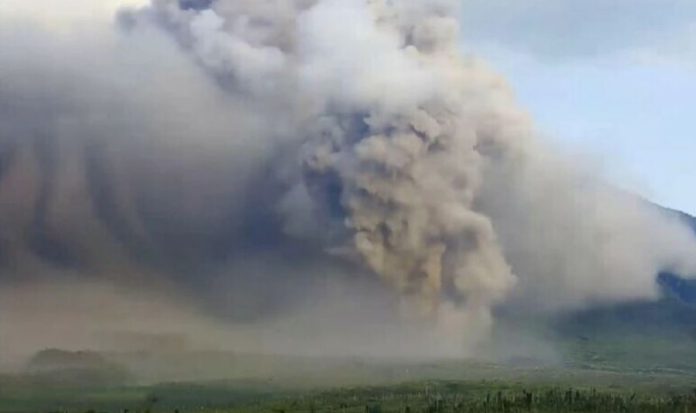JAKARTA: Indonesia’s Mount Semeru erupted on Sunday spewing hot ash clouds a mile into the sky and sending rivers of lava down its side, sparking the evacuation of nearly 2,000 people exactly one year after its last major eruption killed dozens.
The eruption of the highest mountain on Indonesia’s main island of Java, around 800 kilometres southeast of the capital Jakarta, prompted authorities to raise the alert status to the highest level.
“Hot avalanches” caused by piles of lava at the tip of the 3,676-metre volcano slid down after the eruption, National Disaster Mitigation Agency (BNPB) spokesperson Abdul Muhari said in a statement.
The increased threat level “means the danger has threatened the people’s settlement and the volcano’s activity has escalated”, Volcanology and Geological Disaster Mitigation Centre (PVMBG) spokesperson Hendra Gunawan told broadcaster.
No casualties or injuries were reported immediately after the eruption but Gunawan warned nearby residents not to travel within 8km of the crater after the threat level was raised to four.
The BNPB said 1,979 people were taken to 11 shelters, with at least six villages affected by the eruption.
Images on local TV showed evacuees, mostly women, and children, taking shelter in a school.
Videos shared with AFP by local rescue group Irannala Rescue showed a huge black cloud rising from the volcano’s crater, engulfing the sky and blocking the sun in nearby villages.
The villages were being battered by monsoon rains by the afternoon and the rainfall was mixing with volcanic ash, according to Kompas.
Residents were also told to avoid a southeastern area 13km along a river in the direction where the ash was travelling.
“A lot of people have started to go down,” Thoriqul Haq, the local administration chief for Lumajang, where the volcano is located, told Kompas TV.
Most residents in the two most-threatened villages have evacuated themselves, said Patria Dwi Hastiadi, spokesperson of the Lumajang Disaster Mitigation Agency.
Japan’s weather agency had earlier warned that a tsunami was possible in the southern islands of Miyako and Yaeyama in Okinawa prefecture, Kyodo news agency reported, but the country’s meteorological agency said no significant tidal changes were observed.

















